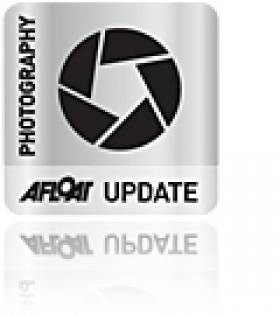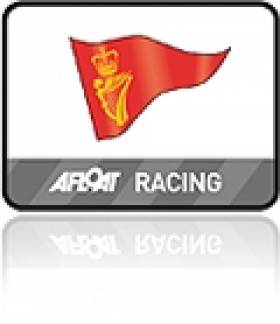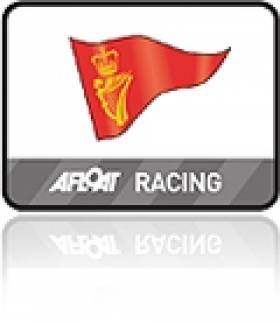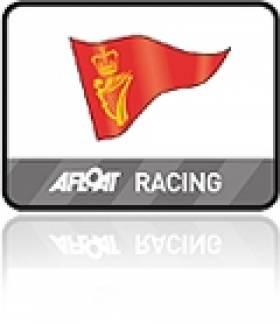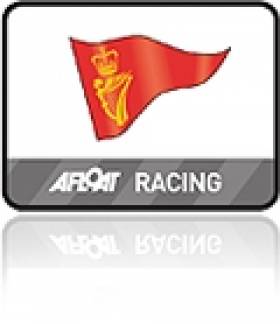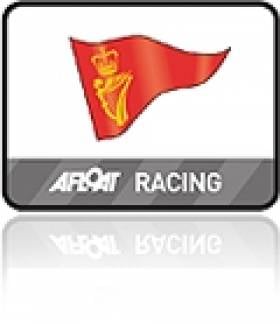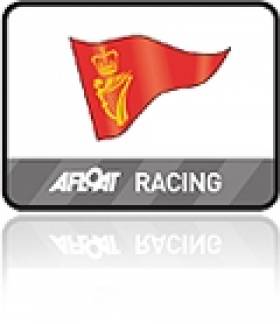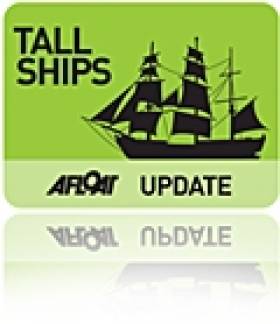Displaying items by tag: RCYC
Isle of Man marine photographer Rick Tomlinson will run a one day photography workshop based from the Royal Cork Yacht Club in Crosshaven on April 6th. This includes both onshore and on the water tuition with as much time as possible spent photographing on the water around Cork Harbour. Rick is also speaking at the RCYC Spring Cruising Dinner that evening.
The workshop has limited space so a high level of one to one tuition is assured and beginners and experienced photographers are welcome to take part. Rick will show how to take great yachting photographs and how to work efficiently on the water. You will also be guided through how to set up your camera and the workflow to edit pictures plus useful tips in Photoshop. Checkout www.rick-tomlinson.com for inspiration.
Special price for RCYC members and friends is just €200 per person.
Outline schedule for 1 day workshop
1000 Meet at the RCYC: Introduction to the workshop and how to set up your camera before we take to the water.
1100 Out on the RIB taking pictures on Cork Harbour where Rick will give ideas and instruction on taking pictures of the racing yachts.
1300 Pub lunch probably on the Harbour somewhere, with informal discussion. (lunch is not included in the price)
1600 return to RCYC and review our pictures on the computer including post production importing and editing on the computer, Photoshop tips and techniques and digital workflows.
1700 finish.
What you need to bring: Camera equipment, laptop (optional), warm clothing, boots and wet weather gear. It can be very wet on the boat.
Individual places and groups of friends welcome.
Exhale Wins in Blustery Third Race of Royal Cork's Winter League
#rcyc – Derry Good's Exhale was the IRC Handicap winner and the overall ECHO All In winner was Ian Hickey's Cavatina in today's third day of Royal Cork's Winter league writes Claire Bateman.
The weather forecast turned out to be deadly accurate and the race organisers of the Marshall Textiles sponsored racing had prepared for every eventuality with great detail including shortening of the course.
The course was predetermined and a sheet showing same was given to each skipper of the fleet of intrepid mariners before they took to the water and this information was again radioed to the fleet as they arrived at the Grassy start. Four rounds were scheduled to be sailed.
Racing commenced in 18 knots of a south/south westerly breeze. Starting from Grassy the first round went to No. 5 port, No. 7port, 14port and back to Grassy and then on to round two first to 12 starboard, and back to Grassy where the organisers had taken the decision to finish racing. What had started as 18 knots had increased to 26 gusting 30 and there wasn't anybody about to question that decision.
A few brave souls did fly kites but that did not last very long in the conditions and indeed some were seen to be having difficulty retrieving them and ended up doing a bit of trawling.
The lower rated boats had possibly an hour and a quarter racing with the big boats possibly having slightly less.
J109 'Jelly Baby' is Royal Cork Yacht of the Year
#rcyc – Royal Cork Yacht Club celebrated a highlight of the year in its Crosshaven clubhouse at the weekend with the presentation of perpetual RCYC trophies writes Claire Bateman.
Admiral Peter Deasy presented the Boat of the Year Trophy to Ian Nagle of Jelly Baby as well as League trophies for: O'Leary Insurance Group Whitesail April, UK Halsey Sailmakers May, Union Chandlery June, a new and welcome sponsor Airport View Parking for July, August and September and last but certainly not least the Heineken Super League.
There were so many trophies that a second table had to be provided to hold them and the magnificent display generated a huge amount of interest during the evening.
Royal Cork's CH Marine League Ends on a High
#rcyc – Apart from the chill in the breeze on Saturday and the beautiful colours in the trees around Crosshaven, one might have been forgiven for thinking it was a summer's day for the last race of the CH Marine Autumn league writes Claire Bateman. (scroll down for photos by Bob Bateman)
The sailors were all in high good humour anticipating an excellent day of sailing with the prospect of two good races and an early return ashore to get back to the club tonight for the final highlight of the event, the prize giving dinner.
Racing outside the harbour today was on two triangular courses with a verycomfortable 8 to 11 knots of breeze from the north with the same conditions pertaining inside the harbour with the fleets on round the cans courses.
Special thanks must got to all the visiting yachts, the huge contingent from Kinsale, our neighbors from CSC, all those from east of the south coast and west of the south coast and of course all our own Royal Cork competitors who turned out in such numbers.
The organisers and all volunteers have worked extremely hard to ensure this was the hugely successful Autumn League it turned out to be and many thanks and appreciation must go to Nick Bendon of CH Marine for the generous sponsorship and wonderful prizes.
Kinsale Visitors Swell Royal Cork Autumn League
#rcyc – A fleet of almost seventy cruisers took to the waters of Cork Harbour today for the opening race of the CH Marine Autumn Regatta writes Claire Bateman.
Competitors travelled from Waterford, Kilkenny, Schull, Cobh and a group of nine very well known and welcome racing boats arrived from Kinsale including Tom Roche's 45ft Salona 'Meridian' and Conor Doyle's X442 the beautiful 'Freya'. All the very welcome boats from other clubs augmented the Royal Cork entry to an excellent number for this very popular event.
Sunday morning's weather was somewhat unkind with rain, mist and a lot of wind. After a short postponement a decision was made to race all the fleets within the harbour. Race Officer Peter Crowley set up Sparetime just north of Whitegate jetty and sent the seven fleets off on various courses in a westerly breeze that started out about 17 to 18 knots but quickly abated to 8 or 9 knots.
The 1720s and the Class One fleet were sent up to No.22 with Whitesail One and Two and Class Four starting with a weather mark that was laid off Spike Island. Classes Two and Three, after an initial beat followed by a run and a Gybe off Cuskinny, arrived at number 20 and on the return leg joined with a convergence of all the boats in the fleets arriving at No. 11 in close proximity to one another. This resulted in a well controlled, and fascinating to watch, Piccadilly Circus like situation. In some instances more than one fleet reached the buoy at the same time with one fleet rounding on Starboard and the other rounding on port.
By this stage the weather was clearing and lightening but it was adjudged too late to start a second race and all the crews returned to enjoy the hospitality of the warm clubhouse.
The event will continue for the next three Sundays and will finish on Saturday October 27th with a prize giving dinner that night. This function is always a heavily booked event so reservations would want to be secured as soon as possible.
Dinghy Sailing Championships to the Fore in Cork Harbour
#rcyc – Last weekend three Munster dinghy sailing Championships were sailed out of the Royal Cork Yacht Club, the 420s, 470s and Optimists writes Claire Bateman. On Saturday the fleets sailed outside the harbour with race officer David O'Brien, using the one committee boat, and starting the 420/470 fleet before starting the Optimist fleet on their trapezoid course.
With a light to moderate wind from the east before turning into the south east during the afternoon there was an opportunity for excellent racing for the 150 competitors that had descended on the Royal Cork the previous evening.
On Sunday with a stronger wind forecast the decision was made to sail on the eastern bank between Cuskinny and Aghada and again it was a day that started with an east wind once again turning more to the south east as the day progressed.
In the 420 class Robert Dickson and Sean Waddilove got the better of Patrick Crosbie and Grattan Roberts with Adam Hyland and Bill Staunton taking the third slot followed by Harry and David Whitaker with Peter McCann and Arran Walsh taking the fourth and fifth slots respectively.
In the 470s Rob Lehane and Iarlaith Kennedy took the winning slot followed by Douglas Elmes with crew and mentor Thomas Chaix in second place followed by Diana Kissane and Jenny Andraeson in third place.
In the Optimist fleet Harry Durcan took the title in atightly fought contest that he won on count back from Adam D'Arcy while in the Junior fleet Peter Fegan was the winner. The Regatta fleet sailed on the Curlane bank with OD Grattan Roberts and the overall winner was eight year old Eve McMahon.
Excellent Turnout for Royal Cork Naval Race (Photos here!)
#navalrace – The Royal Cork's Annual Navy Race took place in Cork harbour at the weekend by kind permission of the Irish Naval Service writes Claire Bateman.
A light southerly breeze greeted the excellent fleet that turned out for the annual Naval Race. Adrielle, moored off Cork beg, did the honours as Committee Boat sending the three fleets off on a beat to the mouth of the harbour. The name of the game was to start as normal on starboard before tacking quickly on to port to get the best of the ebb tide for the beat and thereafter to hug the shore for as long as possible for the run in the harbour.
In the White Sail fleet Eddie English's Holy Grounder did this to good effect to take the win in White Sail ECHO as did John Hayes in Minstrel in White Sail IRC. However, the two big ketches, the Naval Service Creidne and the beautiful Anna Emily from the Naval Yacht Squadron struggled somewhat in the light conditions.
However, amongst the regular sailing names Vinny O'Shea's Corby 33 Yanks & Francs took the IRC One title with Leonard Donnery in No Gnomes doing the same in IRC Two. However, in IRC Three Kieran O'Connell and Graham Marron showed their National 18 wily skills to take the class in Bandit while Kieran Collins in Tambourine had to be content with second with Finbarr Dorgan in No Half Measures taking third.
The day was also an Open Day at the base for Naval Service family and friends with everybody mingling and having a most enjoyable time.
Royal Cork Yacht Club Celebrate Successful 'At Home' Regatta
#rcyc – Good winds and great atmosphere ashore made for an excellent two day Neville Jewellers At Home Regatta for Royal Cork Yacht Club in Cork Harbour writes Claire Bateman.
Plenty of stories were to be had from the Saturday racing even to one account of a spinnaker being blown to shreds on a Class Two boat and a Laser losing its mast on Day Two and a young competitor going overboard from his Optimist.
The fleets were a little depleted as the Laser National Championships were taking place in Dublin and the Royal Cork was represented in all three divisions, Standard Rig, Laser Radial and Laser 4.7. Nonetheless the turnout at Crosshaven was excellent.
The At Home dinner took place on Saturday night and an excellent evening was enjoyed by all with members enjoying the convivial atmosphere, good food and many exchanges of salty dog stories around the tables.
The Family At Home day ashore on Sunday, in addition to the fleet racing in the harbour, was packed with activities including face painting, bouncy castles, and bubbles floating everywhere from the bubble guns provided for the kiddies. Forty Two children took place in a hard fought tug of war. The famous, or infamous, Optimist Parents race took place at the marina in front of the club and had great racing with even greater encouragement from the spectators, even if it took in some over use of tillers and some ingenuous interpretations of the sailing rules! The eagerly awaited Admirals Boules match had a splendid entry of twelve and a ding dong battle for supremacy took place between former Admirals T.E. Crosbie and Kevin Lane with the latter succeeding by the narrowest of margins.
Throughout the afternoon the admiral's Lady, Judy, and her band of willing helpers kept the hungry hordes supplied with copious quantities of scrumptious sandwiches and cakes supplied by the ladies of the club. The children had their own designated area where they were supplied with delicious treats, goody bags, had their faces painted and received squiggly balloons and had high jinks on the bouncy castles keeping their parents well occupied running around after them.
Finally, the prizegiving took place with the prizes being presented by the Sponsor, John Neville, and the Admiral presenting the trophies. The Admiral having thanked the Sponsor, the day came to a close with unanimous agreement that it had been a wonderful weekend.
Royal Cork Yacht Club Unfazed by Thunder in Aghada (Photos)
The Aghada race for cruisers was sailed on Saturday from Royal Cork Yacht Club writes Claire Bateman. It was an all in start and first off the line and, sailing in a purposeful way, was the Deasy/Ivers/Desmond Bad Company followed by Derry Good's Exhale.
SCROLL DOWN FOR PHOTO GALLERY BY BOB BATEMAN
There was a west/north west wind and a lovely clear day with blue skies.The trouble was thunder showers could be seen right around the harbour but more about that later.
The course was a start using Cork Beg, No. 8 starboard, EF2 to port, No. 20 starboard, No. 14 starboard and a finish off Aghada Pier between A2 and and RIB anchored north of Aghada Pier.
Having reached the first weather mark, No. 8, the boats set off on a fetch to EF2 and it was here that the race got interesting. Following that the course effectively took in two windward/leeward rounds. It is said that sailing is not a spectator sport but it was most interesting to watch how the yachtsmen managed these legs. What they had was a tide and fresh water coming from an easterly direction and meeting the tide coming down from the city before joining together and running out the harbour in a southerly sweep. To add to this the wind could be quite light at times and then a gust of 16 or 17 kts would come and it led to crews jumping inboard and then back onto the weather rail in an attempt to keep the boats on their feet. This was very obvious in the case of David Lane and Sinéad Enright's An tOileánach and the same can be said of Kieron O'Connell and Graham Marron's Bandit on the upwind legs.
The final leg was a run to the finish where the hapless Bandit was hit by a shower accompanied by loud peals of thunder with torrential rain that came virtually out of the blue and the crew struggled to get the kite in.
And so on to Aghada where the pier has been closed for quite some time while repairs were being carried out to the stonework, the steps, and to the slipway. Now all is in order again and the pontoons are back in location. Lower Aghada is justifiably proud of its amenities and with a location in the south eastern section of Cork Harbour is available for all seafarers to use and enjoy.
Following a visit to the local hostelry, the finish times having been worked on remotely, the Admiral presented the prizes and Bad Company's endeavours were enough for his own consortium to receive the overall trophy.
Refurbished Naval Yacht 'Creidne' Sailing the High Seas
Although not a 'Long Eireannach', the yacht Creidne is nevertheless a proud member of the Naval fleet. She looked very much the part, with her gleaming blue topsides, during manouvers in Cork Harbour for Royal Cork Yacht Club's annual Naval race last Sunday. PHOTOS BELOW BY BOB BATEMAN.
Creidne underwent an extensive refit in Haulbowline in 2009 and one of her proposed uses is as a stopgap measure, pending the acquisition of a permanent replacement for Ireland's Tall Ship Asgard II.
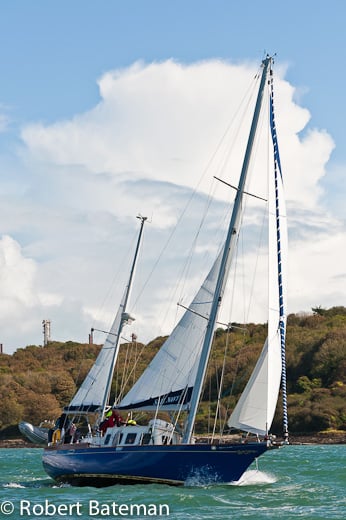
Creidne under Sail. Photo: Bob Bateman. More photos below
Creidne previously acted as a stand in Sail Training Vessel between the retirement of the original Asgard, and the construction of Asgard II. She was the national sail-training vessel from 1975 to 1980.
She was built in Norway in 1967 and is a 48 ft bermudan ketch, originally named Galcador.
Creidne is one of two yachts owned by the Naval Service, the other being Tailte. (Also pictured below). A third yacht Nancy Bet, also used by the Navy, was sold a few years ago.
A limited cruise programme (mainly in Irish waters) is planned, she has a capacity for about 8 trainees compared to 20 on Asgard II.


























